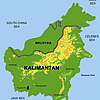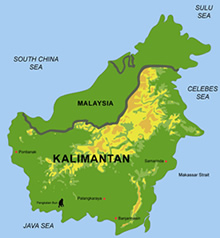news

Be informed
Read the latest documents which tells you what kalteng consultants is doing.
- 2016 Marrakech Action Proclamation for our ...
- Peatland Restoration Agency, Republic of ...
- 2015 United Nations Climate Change Conference in ...
- Indonesia's Silent Tragedy in a Connected World ...
- Report by John Macdonald about the ongoing peat ...
- Indonesia's Fire Crisis — The Biggest ...
- Carbon emissions from Indonesia’s peat fires ...
- Get Your Facts Right on Indonesia's Haze
- Indonesia president visits forest fires amid smog ...
- Again El Nino year 2015: Hot Spots from Borneo ...
- El Nino year 2014: Hot Spots from Borneo taken on ...
- UNFCCC-Warsaw Conference - Framework for REDD+ ...
- Disappointing outcome for forests in Doha, but ...
- Governors Climate and Forests Rask Force, GCF, ...
- 2011 LIDAR- and RGB-Survey in Kalimantan ...
- UNFCCC Climate Summit in Cancún, Mexico, COP16; ...
- Reducing emissions from peatlands under REDD, WI ...
- Palangka Raya Declaration on REDD+ and MRV in ...
- Excursion to the burned Taruna-Base Camp in Block ...
- PRESS RELEASE. RAGING FOREST FIRES THREATEN WILD ...
- Milan Geoservice Calendar with Indoneisan ...
- An Investigation of LiDAR Data Processing in ...
- Successful Helicopter Flight Trials with Airborne ...
- Kalteng Consultants had an audience with the ...
- Declaration on the Heart of Borneo Initiative, ...
- 2006 Fires in Kalimantan, next El Nino Southern ...
- Suwido Limin, director of UNPAR/CIMTROP Fire ...
- The Amount of Carbon released from Peat and ...
- Kalteng Consultants Office, since
gallery

image gallery
Find a large collection of images from many years of exploration by kalteng-consultants.
news
2015 United Nations Climate Change Conference in Paris, 30.Nov.-12.Dec.
The 2015 United Nations Climate Change Conference, COP 21 or CMP 11 was held in Paris, France, from 30 November to 12 December 2015. It was the 21st yearly session of the Conference of the Parties (COP) to the 1992 United Nations Framework Convention on Climate Change (UNFCCC) and the 11th session of the Conference of the Parties (CMP) to the 1997 Kyoto Protocol.[1]
The conference negotiated the Paris Agreement, a global agreement on the reduction of climate change, the text of which represented a consensus of the representatives of the 196 parties attending it.[2] The agreement will enter into force when joined by at least 55 countries which together represent at least 55 percent of global greenhouse emissions.[3][4][5] On 22 April 2016 (Earth Day), 174 countries signed the agreement in New York, [6] and began adopting it within their own legal systems (through ratification, acceptance, approval, or accession).
According to the organizing committee at the outset of the talks,[7] the expected key result was an agreement to set a goal of limiting global warming to less than 2 degrees Celsius (°C) compared to pre-industrial levels. The agreement calls for zero net anthropogenic greenhouse gas emissions to be reached during the second half of the 21st century. In the adopted version of the Paris Agreement,[3] the parties will also "pursue efforts to" limit the temperature increase to 1.5 °C.[2] The 1.5 °C goal will require zero emissions sometime between 2030 and 2050, according to some scientists.[2]
Prior to the conference, 146 national climate panels publicly presented draft national climate contributions (called "Intended Nationally Determined Contributions", INDCs). These suggested commitments were estimated to limit global warming to 2.7 degrees Celsius by 2100.[8] For example, the EU suggested INDC is a commitment to a 40 percent reduction in emissions by 2030 compared to 1990.[9] The agreement establishes a "global stocktake" which revisits the national goals to "update and enhance" them every five years beginning 2023.[3] However, no detailed timetable or country-specific goals for emissions were incorporated into the Paris Agreement – as opposed to the previous Kyoto Protocol.
A number of meetings took place in preparation for COP21, including the Bonn Climate Change Conference, 19 to 23 October 2015, which produced a draft agreement.[10]
The head of the Paris Conference, France's foreign minister Laurent Fabius, said this "ambitious and balanced" plan is a "historic turning point" in the goal of reducing global warming.[7]
One year on, the ratification of the Paris Agreement was celebrated by the Mayor of Paris Anne Hidalgo by illuminating the Eiffel Tower and the Arc de Triomphe, Paris' most iconic monuments, in green.[8]

